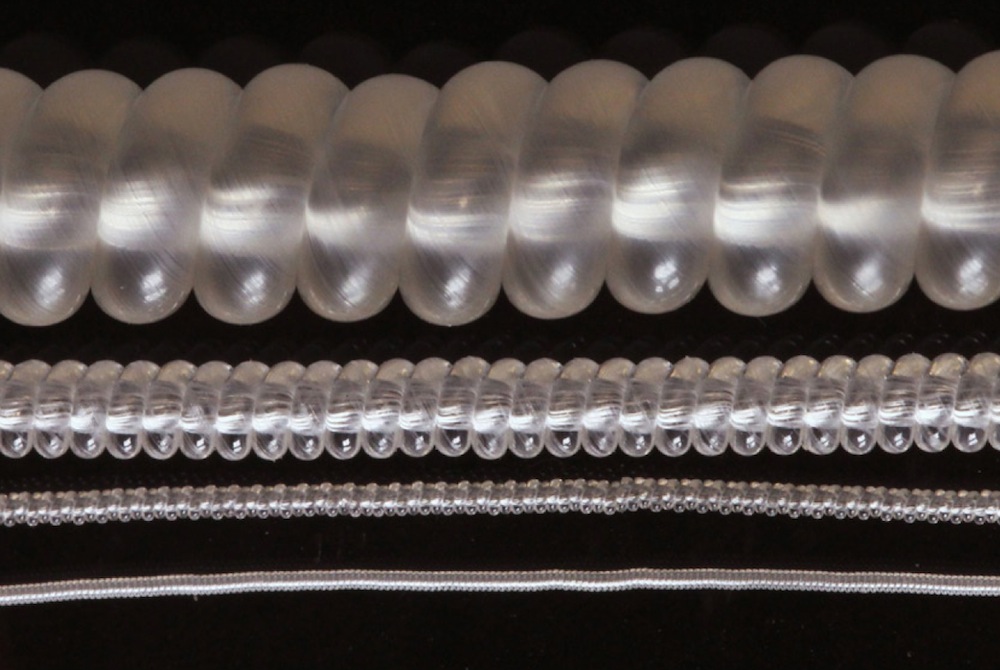Artificial 'Yarn Muscles' 100X Stronger Than Human Muscles

Using just coiled fishing line and sewing thread, a team of scientists has developed a way to create super-strong artificial muscles.
The fiber muscles can lift 100 times as much as human muscles of the same length and weight, generating the same power per unit weight as a jet engine, researchers say.
The artificial muscles could be used to power the limbs of humanoid robots, to open or close windows in a building to maintain the temperature, or even to make clothing with fibers that expand or contract to keep the wearer cool or warm. [Biomimicry: 7 Clever Technologies Inspired by Nature]
"The simplicity is the beauty of this technology," said Ray Baughman, a chemist at the University of Texas at Dallas and leader of the study, which was detailed today (Feb. 20) in the journal Science. "High-school students in their family room can make their own muscles and deploy them," Baughman added.
The scientists found that when they twisted the fiber even more, it produced coiling, as happens when you over-twist a rubber band. Coiling in the same direction as the twist creates muscles that contract when heated and expand again when cooled. By contrast, coiling in the opposite direction makes muscles that expand when heated.
The fiber muscles could be used to power the muscles in androids or exoskeletons, the researchers said. In the case of robotic muscles, electrical energy, not temperature change, would drive the contraction of fibers.
"Present humanoid robots or exoskeletons or prosthetic limbs are primitive, mechanically," Baughman told Live Science. Since they are run on motors or hydraulics, these robotic parts don't have the dexterity of a human hand, he said.
Sign up for the Live Science daily newsletter now
Get the world’s most fascinating discoveries delivered straight to your inbox.
The new artificial muscles could also be used to open and close heavy windows in a building in response to the air temperature, without motors or electricity — which the researchers demonstrated.
Similarly, clothing designers might use the coiled muscles to create fashions that adapt to keep the wearer warm or cool, the scientists said. The coiled fibers would simply expand when the air temperature warms to let the clothing breathe.
Baughman has made artificial muscles out of carbon nanotube yarns before, but those are much more expensive and complicated to make. By contrast, the fiber muscles are inexpensive to make and easy to commercialize, Baughman said.
The new muscles contract to about 50 percent of their length, compared with carbon nanotubes, which contract to only about 10 percent their initial length, he said.
As with all artificial muscles, the yarn muscles can't convert electrical to mechanical energy very efficiently yet. But there's "no other application I know about that does as well as these coiled polymer muscles," Baughman said.
Follow Tanya Lewis on Twitterand Google+. Follow us @livescience, Facebook& Google+. Original article on Live Science.











